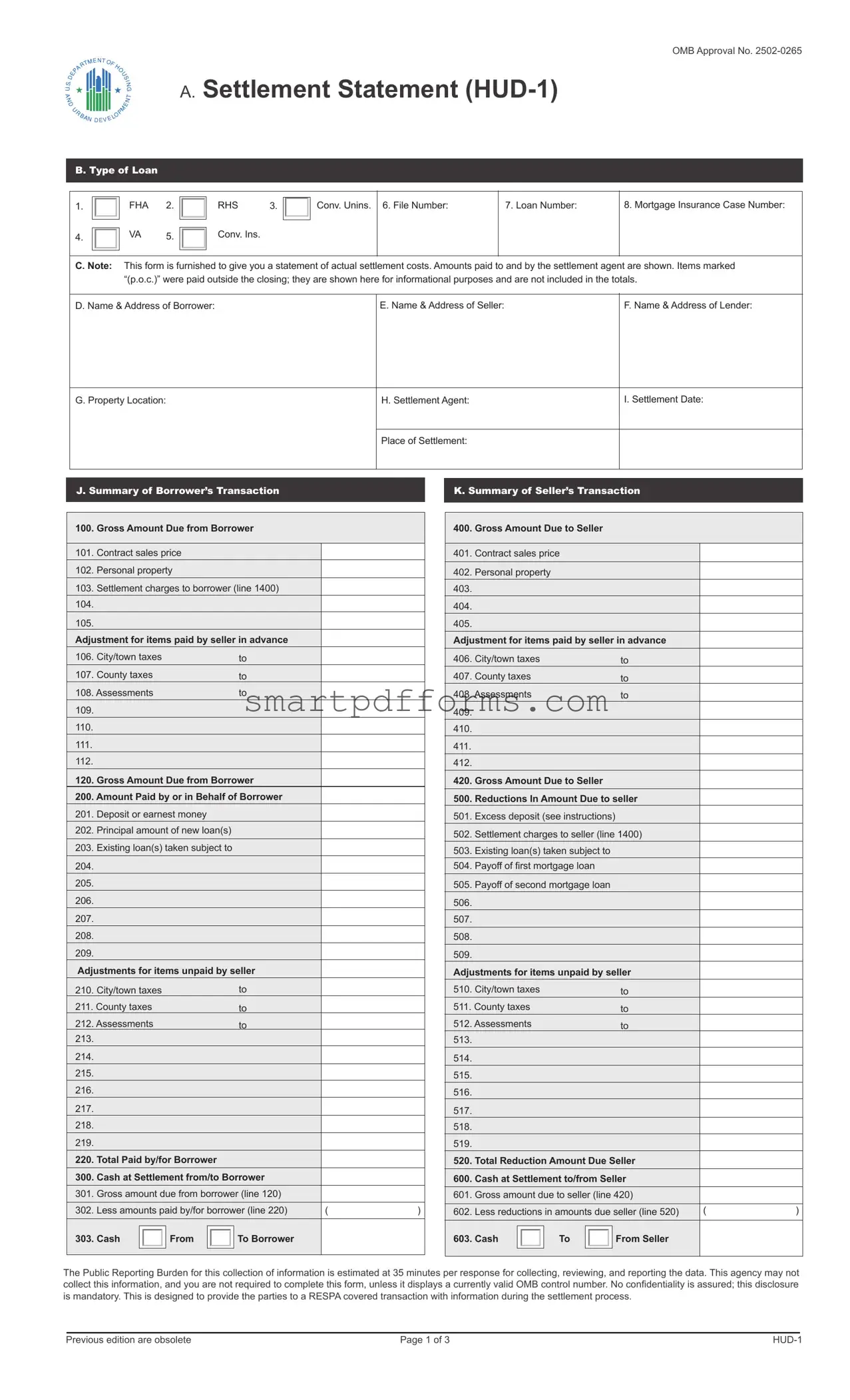Blank HUD-1 Settlement Statement PDF Template
The HUD-1 Settlement Statement form is a document utilized in real estate transactions, particularly during the closing process, which itemizes the final costs for both the buyer and seller. This form ensures transparency, enabling all parties to clearly understand the fees and charges applied before finalizing the transaction. For those looking to delve deeper into the details or in need of completing the HUD-1 form, click the button below to get started.
Make This Document Now



